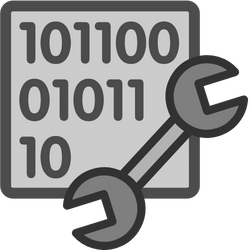Apache Airflow is a powerful open source air traffic control system. It is a powerful tool for managing air traffic, optimizing traffic flow, and detecting and tracking airspace violations. Apache Airflow is free and open source software.
What is Apache Airflow use for?
Apache Airflow is a workflow management system used to create, monitor, and manage data pipelines. It can be used to schedule and monitor tasks, as well as control the flow of data through a data pipeline. Airflow can be used to manage data pipelines of any size, and can be used with a variety of data processing tools, including Hadoop, Spark, and PostgreSQL.
Is Apache Airflow an ETL tool?
There is no one-size-fits-all answer to this question, as Apache Airflow can be used for a wide range of tasks, from data cleanup to full-blown ETL (Extract, Transform, Load) workflows. That said, Airflow does have some features that make it well-suited for ETL.
Airflow’s ability to schedule and manage tasks, for example, can be extremely helpful in ETL workflows, where a large number of tasks need to be run in a specific order. Airflow’s built-in support for dependencies between tasks can also help ensure that data is properly processed and loaded into the target system.
Finally, Airflow’s ability to monitor and report on the status of tasks can be valuable in tracking the progress of an ETL workflow and troubleshooting any issues that may arise.
How it works?
Airflow is a workflow management system developed by AirBnB. It allows you to create and manage workflows, and track the progress of your data pipelines.
Airflow consists of two parts: the webserver, which runs the airflow worker process, and the airflow client, which you use to interact with the webserver.
The webserver runs on a worker machine, and is responsible for scheduling and running tasks. It communicates with the airflow client, which is installed on every machine that contains data to be processed.
The airflow client is used to submit tasks to the webserver, and to monitor the progress of those tasks. It can also be used to view the logs of completed tasks.
Is Airflow same as Jenkins?
Airflow and Jenkins are both open source software tools used for managing and executing data pipelines. Both tools are popular among data engineers and scientists, and both have a large and active user community.
However, there are some key differences between Airflow and Jenkins. Airflow is a newer tool, and it is specifically designed for managing data pipelines. Jenkins is a more general purpose tool, and it can be used for a wider range of tasks. Airflow also has a more sophisticated user interface, and it offers more features and functionality than Jenkins.
Overall, Airflow is a more powerful and versatile tool than Jenkins. However, Jenkins is more widely used, and it may be a better choice for some users.
What are the two types of Airflow?
There are two types of airflow: local airflow and detached airflow.
Local airflow is airflow that is confined to a single cluster. This type of airflow is typically used for development and testing.
Detached airflow is airflow that is spread across multiple clusters. This type of airflow is typically used for production.
Is Airflow a programming language?
Airflow is not a programming language. It is a software platform designed to manage data pipelines. It can be used to programmatically schedule and monitor data workflows, but it is not a programming language.

